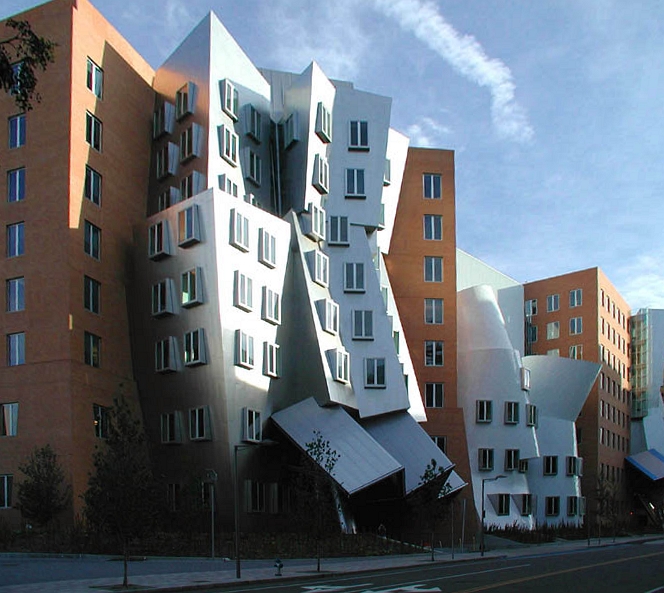John
Silber is a former president of Boston University, a philosopher and a
self-taught architect. "Architecture of the absurd" attacks certain
trends in contemporary architecture. Some architects, the author argues,
consider their buildings to be sculptures or artworks. These frequently weird
buildings are defended by nebulous quasi-philosophical arguments, while the
architect elevates himself to the status of Genius. In other words, these
architects see themselves less as real architects and more as modern artists.
Unsurprisingly, their creations are beset by the same problems as other
modernist or postmodernist works of art.
Silber believes that buildings of this sort are non-functional, aesthetically disastrous and frequently too expensive. The architects no longer serve their clients or the public at large, preferring to build absurd houses to inflate their "genial" egos. Silber's main examples include the MIT Stata Center, the Peabody Terrace, the Walt Disney Concert Hall and the Simmons Hall. A surprisingly large amount of bad buildings seem to be concentrated in Cambridge, Massachusetts! My personal "favourite" is the Stata Center (pictured on the book cover), where scientists are carrying out sensitive research for the US military...inside offices with transparent walls made of glass! The building leaks constantly, and several strange details of the interior design has been covered by large wall papers, since nobody could stand them. Indeed, the Stata Center looks like a cross between a chaotic building site and a modern art gallery. The Peabody Terrace looks like something that could have worked in the Soviet Union during the Cold War. And Simmons Hall? Silber has a point that it looks like one of Saddam Hussein's prisons!
Silber isn't against innovative and bold designs in architecture. Far from it. He likes the Sydney Opera House, IAC Headquarters and the Watts towers. His definition of "absurd" architecture is that form doesn't follow function, and that the buildings don't fit in their surroundings, making them aesthetically unappealing. The Sydney Opera House, by contrast, has perfect acoustics, and its strange design resembles that of sails, which is logical since the Opera House stands close to a harbour.
Occasionally, however, Silber strays from this objective criterion of absurdity to a more subjective one. Thus, he attacks the AT&T building in New York (now the Sony building), which resembles a Chippendale cabinet, without explaining whether the building is non-functional, if so how, and why an enormous Chippendale cabinet would disfigure Midtown Manhattan in the first place? (I visited Manhattan. Is there anything that even *could* disfigure that place of high architectural strangeness? I mean, you could probably build a pyramid there without anyone even noticing the difference!) Here, it seems that Silber is simply saying "boo to Chippendale".
Overall, however, I think he makes an excellent case. The book is relatively short, easy to read and has a lot of colour photographs of bad and absurd buildings. And yes, it's funny too!
I found the "philosophy" behind the Stata Center particularly interesting, since I attended a senior high school in Sweden built according to some kind of "progressive" philosophy. For instance, the large room where the teachers spend their breaks had glass walls, so the students could see them at all times. The space where the students spent their breaks was surrounded by class rooms, and some of the class rooms also had transparent walls. The whole school was surrounded by a balcony, where students could smoke during the breaks. The centre of the school was a library surrounded by an indoor park! I suppose the idea behind all this was to make the school more "open", "democratic" and "transparent". Naturally, it didn't work out - the teachers soon bought large draperies to keep the students from looking at them in their "glass cage", the library became uninhabitable due to the greenhouse atmosphere needed for the gardens, and students having breaks constantly annoyed those having classes by looking at them through the transparent walls or balcony windows.
And yet, this school (which otherwise looks pretty good - almost like a Japanese temple) is a far cry from the monstrous absurdities documented by John Silber in his book...

No comments:
Post a Comment